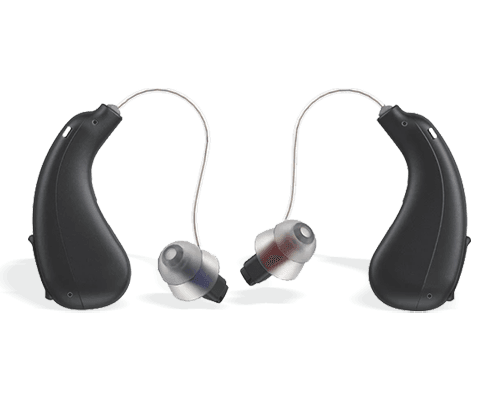The Best OTC Hearing Aids in 2025: We Tested Them All—Here Are Our Favorites
Improve your hearing health with one of these top choices for affordable, high-quality OTC hearing aids.

- Jabra Enhance earned our Best Overall pick for its top sound quality, long battery life, lengthy trial period, Bluetooth capability, and more.
- Other favorites include Eargo (Best Invisible), Audien (Most Affordable), Lexie (Best Value), Audicus (Best Support), and Elehear (Best for Tinnitus).
- Our review is based on 5,000 hours of research and testing. Keep reading for detailed OTC hearing aid reviews, expert insights, and buying advice.
NCOA supports everyone’s right to age well. That’s why we test and recommend products we believe can help you live a healthier life. We’ve spent more than 5,000 hours researching hearing aids to give you the most accurate product reviews. To find the best OTC hearing aids, we:
- Consulted with audiologists, hearing instrument specialists, and aging care experts
- Put more than 50 hearing aids through a series of 21 different tests
- Mystery shopped more than 20 brands
- Surveyed hundreds of older adults who use hearing aids
- Interviewed experts on hearing loss
- Sent hearing aids to our friends and family with hearing loss to provide long-term testing notes
- Read thousands of verified customer reviews
We’re constantly testing new hearing aids to give you the most accurate and up-to-date recommendations. Read more about our hearing aid review methodology.
50+
Hearing aids tested
300+
Hearing aid users surveyed
77
Testing criteria
Over-the-counter (OTC) hearing aids make it easier than ever to find a pair that fits your lifestyle and budget. As long as your hearing loss is mild to moderate, you can purchase directly online or in-store without a prescription.
Still, having to sift through all your choices can be a lot of work. With so many manufacturers, devices, and places to buy them, the decision can feel overwhelming. So we did the research for you.
We compare the best OTC hearing aid brands below based on our research and testing. Keep reading for more details to help you choose the right hearing aids.
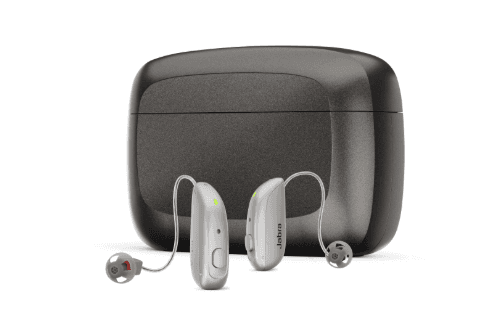
NCOA Exclusive Sale:
$200 off Enhance Select with code: NCOA200
- Highest performance in our OTC hearing aids testing
- 0% APR for 36 months
- 100-day risk-free trial
- Audiology support
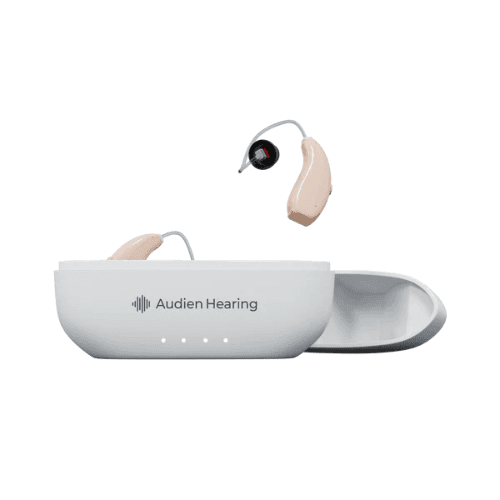
- Six models to choose from
- Bluetooth available
- 45-day trial period
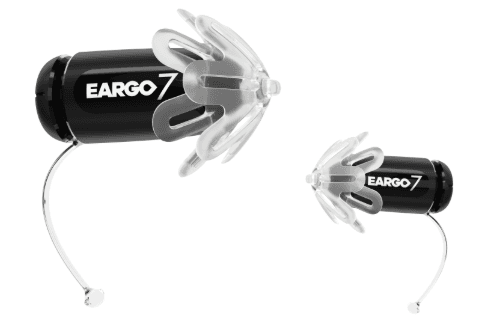
- Virtually invisible design
- Free “Fit & Feel” sample kit
- Includes lifetime support and warranty
Our picks for the best OTC hearing aids
- Jabra Enhance: Best Overall
- Audien: Most Affordable
- Eargo: Best Invisible
- Audicus: Best Support
- Elehear: Best for Tinnitus
- Lexie: Best Value
Comparison of the best OTC hearing aids
| Comparison Features | ||||||
|---|---|---|---|---|---|---|
| Our Rating (out of 10) | 9.9 |
9.7 |
9.5 |
9.4 |
9.6 |
9.4 |
| Trial period (days) | 100 |
45 |
45 |
100 |
45 |
45 |
| Battery type | Rechargeable |
Rechargeable |
Rechargeable |
Rechargeable |
Rechargeable and disposable |
Rechargeable |
| Bluetooth? | ✅ |
✅ |
✅ |
✅ |
✅ |
✅ |
| Device type* | RIE |
BTE, ITE |
CIC, Earbud |
RIC, CIC |
RIE |
BTE, RIE |
*BTE: behind-the-ear; CIC: completely in the canal; ITE: in the ear; RIE: receiver in ear.
Video: Best OTC hearing aids
In the video below, you’ll learn about the best OTC hearing aid options—including brands like Jabra Enhance, Audien, Eargo, Lexie, and more—as well as the key differences between OTC and prescription devices. It’s a helpful overview if you’re deciding whether an OTC hearing aid could be right for you.
Our reviews of the top OTC hearing aids
Jabra Enhance: Best Overall
We chose Jabra Enhance as our best overall OTC hearing aid for its exceptional sound quality, long battery life, and standout customer service.
Jabra Enhance
Best OverallNCOA Exclusive Sale:
$200 off Enhance Select with code: NCOA200

NCOA Exclusive Sale:
$200 off Enhance Select with code: NCOA200
- Learn more in our Jabra Enhance review
- Device type: Receiver-in-Ear (RIE)
- Battery type: Rechargeable
- Trial period: 100 days
- Bluetooth: Yes
- Available in standard, miniature, and micro sizes
- Hands-free phone calls available
- Select 300 and 700 have Jabra’s SoundScape speech clarity technology
- Devices come in 5 different colors
- Remote adjustments from Jabra’s Audiology team
Pros
- Post-purchase care from hearing experts
- Exceptional sound quality
- Strong battery life (30 hours)
- Long trial period (100 days)
- Clear Bluetooth audio streaming (100-foot range)
Cons
- More expensive than most OTC brands
- Hands-free calling not available in all models
- Testers said changing domes and adding sports lock was difficult
What we like about Jabra:
From unboxing and initial fitting, to cleaning and maintaining the hearing aids and everything in between, Jabra Enhance stands out from the pack. Setup is relatively simple with the easy-to-follow user guide, and pairing the hearing aids to your phone or mobile app is straightforward, according to our testers.
All models come standard with high-end features like Bluetooth compatibility and a generous trial period: 100 days compared to the industry standard of 45. Pricing is transparent—you don’t have to dig around to figure it out—and Jabra does run promotions fairly often.
Other things we liked:
- Exceptional sound quality: Clear and crisp at every range we tested with noise-canceling technology in all models
- Long battery life: Lasts up to 30 hours when fully charged
- Standout customer service: Initial orientation call included plus generous phone, email, and online chat support (unique for an OTC hearing aid)
- Flexible fit: Four dome sizes (small, medium, large, and tulip) provide comfortable options for most ear shapes
What could be better:
Given the relatively high price tag, we wish Jabra Enhance automatically included lifetime audiology support. The optional premium package—which adds three years of professional hearing care and an enhanced three-year warranty—costs $200 extra. Still, Jabra does offer financing.
Other things we wish were better:
- Some challenging features: Changing the domes and adding the sports lock might be difficult for people with arthritis or limited dexterity.
Our testing experience
For this review, we tested the Jabra Enhance Select 700, ranking it great (four out of five) or excellent (five out of five) on all 13 quality measures.
Fitting the hearing aids was nice and simple. “The videos on the app are great. It really makes getting the devices set up and running very easy and foolproof!” said one tester. “These hearing aids fit really well and I forgot I was wearing them within a couple of minutes.”
Testers also pointed out how easy it was to toggle between the different device modes and volumes. (For the Select 700, you can either do this using the app or the buttons on the hearing aids themselves.) They said the charging case was “well-designed, clean, and intuitive,” and appreciated the “very clear” Bluetooth audio experience.
When we tested the range of Bluetooth streaming in the Select 700, testers said the audio quality was superb. “The 700s have an impressive range,” one tester said. “Even more than 100 feet away, I could still hear my music clearly.”
Care and maintenance passed our tests as well, with testers noting it was easy to clean the devices and change the earwax filters.
Runners and other active users will appreciate the sports lock feature, which helps stabilize the hearing aids during exercise. “With the sports lock on, the device feels very secure in each ear,” said a tester. The devices didn’t bounce around during testing, even through a workout.
But one tester remarked that people with arthritis or dexterity challenges might find the sports lock frustrating. “The sports lock wasn’t the easiest to put on because it’s a tight fit. Older adults with dexterity issues may need help,” the tester said. “There were no instructions on how to put it in the ear, and it wasn’t intuitive at first, but I figured it out. An image showing the lock in the ear would be helpful.”
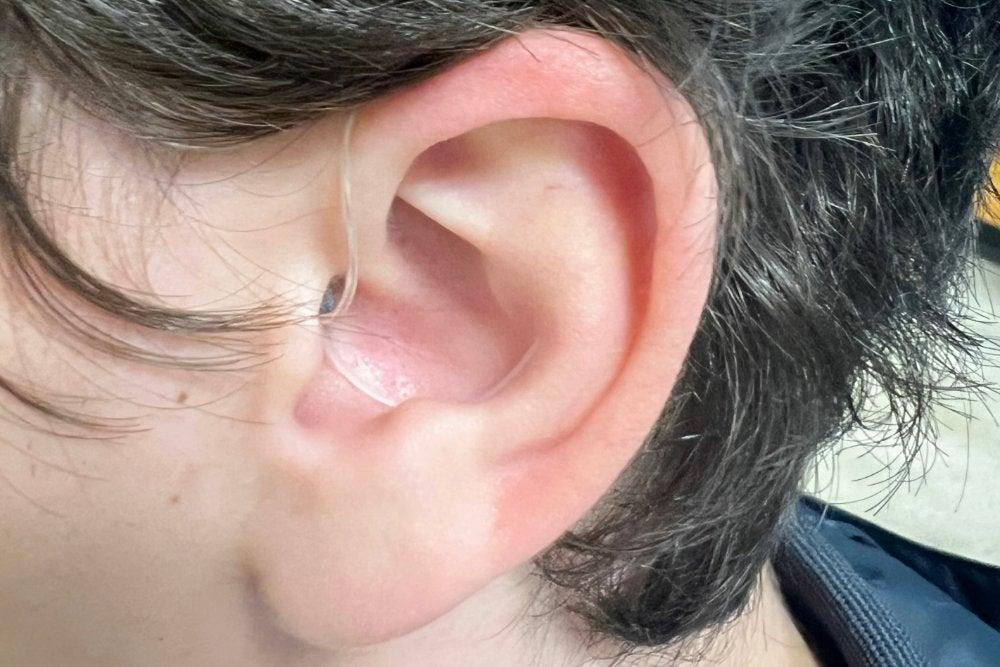
Overall, our testers were very happy with the Jabra Enhance Select 700. They noted that the hearing aids seemed like prescription-level quality at an OTC price. “They have great sound, a secure fit, a comprehensive, helpful app, and in-app audiology support with remote programming. I am very impressed with the quality, fit, and feel of the Jabra Enhance 700s.”
| Enhance Select 50R | Enhance Select 300 | Enhance Select 700 | |
| Cost | $1,195 | $1,695 | $1,995 |
| Type | RIE | Mini RIE | Micro RIE |
| Model notes | Low price with high-end features like Bluetooth | Advanced acoustics and hands-free calling | Only model with Bluetooth LE Audio and Auracast |
*Higher price reflects the $200 cost for the premium package, which includes an unlimited warranty and professional audiologist support for three years after purchase.
The Jabra customer experience
Testers gave the Jabra Enhance Select 700 a 10/10 for customer service (tied with Eargo—the only other brand on this list to earn 10/10 for customer service). Here’s what you can expect:
- Warranty and trial period: 100-day risk-free trial period for all Jabra Enhance Select devices; one- to three-year manufacturer’s warranty; loss-and-damage protection (depending on whether you upgrade to the premium package)
- Financing: Yes
- Customer service: If you need additional assistance, you can visit the Jabra Enhance customer support page to fill out an online contact form. Other options include:
- By phone: 800-854-2772 (Monday–Friday, 8 a.m.– 8 p.m. ET; Saturday and Sunday, 10 a.m.–5 p.m. ET)
- By email: support@jabraenhance.com
- Using chat: Type your message and a real-life support agent will respond within two to five minutes
Audien: Most Affordable
In addition to its attractive price tag (it’s the least-expensive brand on this list by $300), we chose Audien as our most affordable OTC hearing aid because some models include higher-end features such as rechargeable batteries, Bluetooth compatibility, and hands-free calling. Plus, the brand’s newest device, the Atom X, features an innovative, first-of-its-kind touchscreen case for adjustments.

- Learn more in our Audien review
- Device type:
- In-the-Canal (ITC)
- Behind-the-Ear (BTE)
- Battery type: Rechargeable
- Trial period: 45 days
- Bluetooth: Yes
- Six hearing aid models to choose from
- All models feature a rechargeable battery
- Sound chip technology for improved clarity
- Newest model, the Atom X, features a portable case with touchscreen adjustments
- BTE models include directional sound technology
- Lifetime support
Pros
- Low price
- Long battery life in Ion Pro (48 hours)
- Bluetooth (Atom X and Ion Pro)
- Straightforward fit
- Easy setup
Cons
- No audiology support
- Limited customer support
- Lack of advanced sound processing
- Portable charging case only available with certain models
What we like about Audien:
Audien’s sound quality is good overall, even on the lowest-priced model. We like that there are six models to choose from, ranging in price from $99–$689, and at the priciest level you’ll get Bluetooth streaming and a 48-hour battery life. Audien also offers both BTE and ITE (in-the-ear) styles, so you can choose whether you want a small device or larger, behind-the-ear style. In general, it feels like this brand gives a lot of different options to choose from. We were especially impressed with Audien’s newest model, the Atom X. These hearing aids feature the sound quality of the Ion Pro in an in-the-ear model, with an innovative touchscreen portable charging case.
Other things we liked:
- Fit and comfort: Straightforward fit with two easy-to-swap dome sizes offer some ability to customize
- User manual: Clear and simple to follow
- App: Organized, user-friendly, and easy to pair with the hearing aids
What could be better:
It’s true you get what you pay for. In Audien’s case, what you gain in cost savings, you lose in customer and product support. Yes, you will find a 45-day money-back guarantee, and that may be enough given the low price. But you won’t get professional audiology support or more than a limited one-year warranty unless you upgrade to the optional protection plan ($4/month).
Other things we wish were better:
- Charging time: Takes up to six hours to reach full battery charge, which is about double the average amount of time
- Color: BTE models only come in light tan, which can make them more visible depending on your skin tone
- Presets: Limited to Comfort, Crowd, Conversation, and TV with no ability to customize
- Customer support: Minimal phone hours (with no toll-free number), no live chat feature, and a 24-hour response time for email inquiries
Our testing experience
We tested the Ion Pro, which is Audien’s most expensive hearing aid at $689 per pair, and the Atom X, the newest ITE model, which costs $389 per pair.
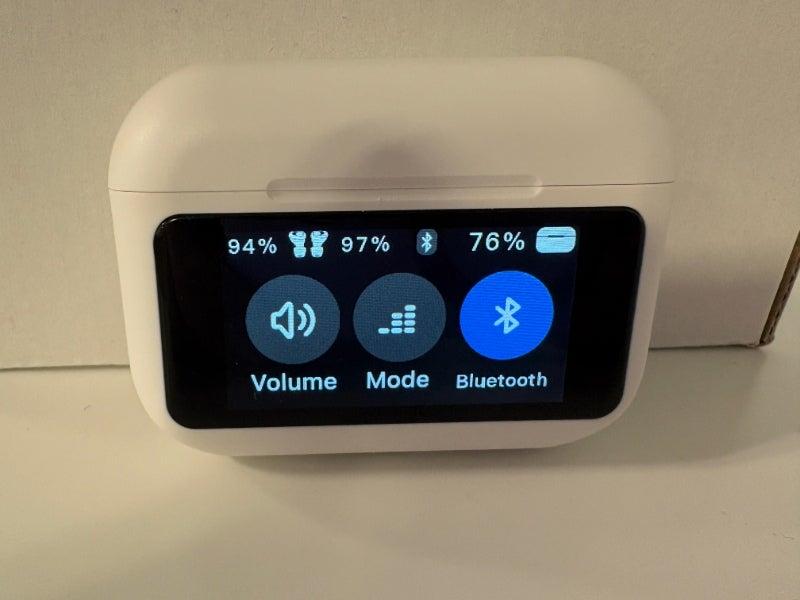
During setup, testers found the Ion Pro app to be “bare-bones” yet easy to connect to and use. The app did time out for some people whose phones went to sleep. And the devices were surprisingly pleasant to wear—as one tester reported, they “felt very comfortable in my ear; no adjustments needed.”
The Atom X does not use an app. Instead, users adjust their device settings using the portable charging case’s touchscreen controls or the devices themselves. “I have to say, I find this to be brilliant,” said a tester. “You don't have to worry about connecting to your phone and then opening an app to switch modes or adjust volume, it's all super quick and easy on the case. Also, the instructions on the case are very straightforward and intuitive.”
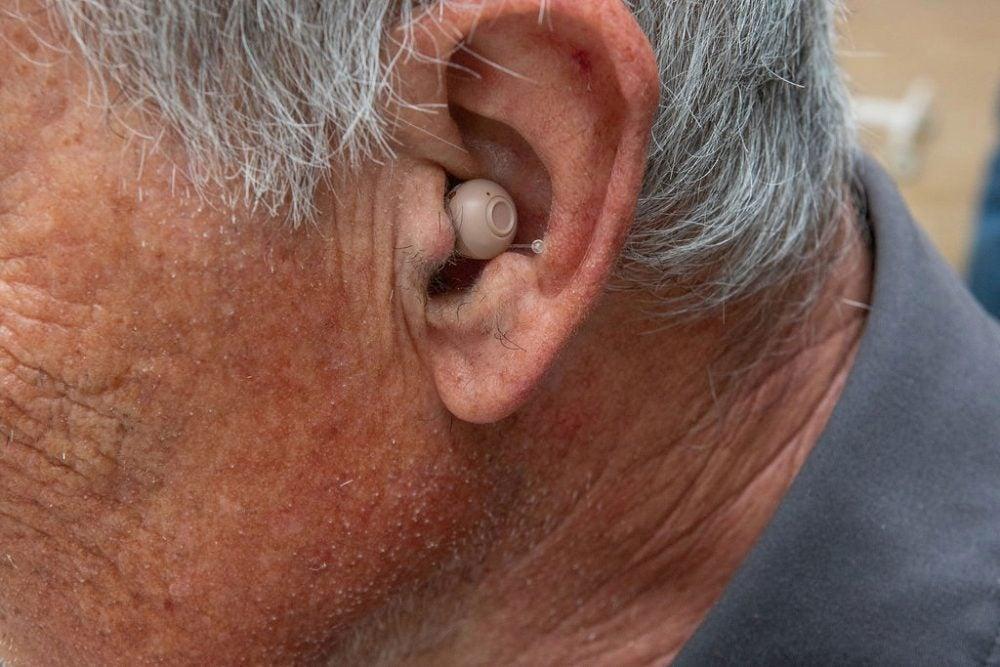
The Bluetooth experience was an unexpected surprise, offering reliable sound, performance, and range. Users reported good music streaming with another perk: Background noise cancellation that performed better than the feature designed for that purpose. “I literally could not hear another thing while streaming music,” one tester explained, “and it was set to a normal volume! The music streaming is definitely more effective at noise cancellation than the noise reduction setting,” the tester said. But call streaming wasn’t as good as music streaming. “Using Bluetooth to make a phone call was really quiet. I needed to turn up the volume several times,” said another tester.
When it came to using Bluetooth on the Atom X, our testers were still impressed. “All of the Bluetooth features work well. I streamed music, walked a good distance from my phone, and was still able to hear the music well,” one tester said. “It was easy to connect the hearing aids to my phone's Bluetooth, as the instructions in the user manual are very clear.”
There were a few other minor annoyances with the Ion Pro. It was sometimes challenging to work the device buttons that control volume and settings, for example. Some testers noticed static sounds when tucking longer hair behind their ear or putting their glasses on. Our consulting audiologist noted that this is not static interference, just the sound the microphone makes when brushed up against. And many of the pieces—like the wax guard and domes—are small. You’ll want to keep this in mind if you have arthritis or limited hand mobility.
One of the biggest drawbacks our testers experienced with the Atom X was difficulty removing the domes to clean the wax guards. “I had a hard time getting a good grip on the dome to pull it off the device,” a tester said. “Changing the wax guards wasn’t a problem, but I struggled to remove the domes, which need to come off to change out the wax guards.”
| Audien Atom | Audien Atom 2 | Audien Atom Pro 2 | Audien Atom X | Audien Ion | Audien Ion Pro | |
| Cost | $98 | $189 | $289 | $389 | $489 | $689 |
| Type | ITE | ITE | ITE | ITE | BTE | BTE |
| Model notes | Lowest price | 24-hour battery life | UV cleaning light in charging case | Touchscreen case for adjustments | BTE model | BTE with Bluetooth; most powerful model |
The Audien customer experience
Testers gave Audien a 9.3 out of 10 for customer service. Here’s what you can expect:
- Warranty and trial period: 45-day money-back guarantee for all Audien devices; limited one-year warranty unless you upgrade to a protection plan
- Financing: No
- Customer service:
- By phone: 205-255-1112 (Monday–Friday, 7 a.m.– 4 p.m. PT)
- By email: support@audienhearing.com
Eargo: Best Invisible
We chose the Eargo as our best invisible OTC hearing aid because of its nearly undetectable CIC (completely-in-canal) design, excellent sound quality, user comfort, and lifetime professional support.
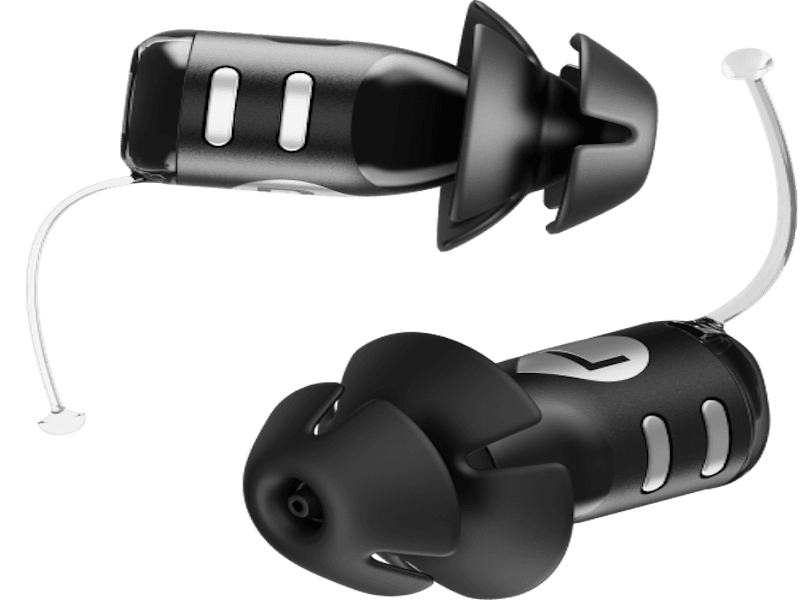
- Learn more in our Eargo review
- Device type:
- Completely-in-Canal (CIC)
- Earbud
- Battery type: Rechargeable
- Trial period: 45 days
- Bluetooth: Yes
- Eargo 8 and SE are virtually invisible in the ear
- Up to 16 hours of battery life before recharging
- Sound Match technology to personalize hearing
- Stream phone calls and music with Eargo LINK
- 1–2 year warranty, depending on device
Pros
- Nearly invisible design
- Easy setup
- Clear audio quality
- Can order “non-working” pair to test fit
Cons
- Higher price
- Shorter battery life (16 hours)
- Bluetooth streaming in only one model (Link)
- Difficult to change wax guards
What we like about Eargo:
Eargo performs well across the board. The hearing aids work great out of the box yet you can customize for things like your preferred sound frequency range, listening modes, and noise cancelation. We also love the brand’s unique “nearly invisible” design, making it one of the best invisible hearing aids.
Eargo offers a 45-day initial trial period (industry average), free returns, and a generous two-year warranty that includes all repairs and a one-time replacement. We also love the “fit and feel” option, which lets you order and try a non-working pair of Eargos to test-drive their comfort before you buy. Together with available lifetime professional support, Eargo’s commitment to the user experience are why we rank them highly for customer service and brand reliability.
Other things we liked:
- User manual: Available in print and electronically in large, easy-to-read text with simple, step-by-step instructions
- Presets: Easy to toggle among six useful modes: normal, restaurant, phone, TV, meeting, and music
- Sound quality: Clear and crisp, with performance approaching higher-end headphones. One tester said, “The sound was excellent—it didn’t live up to my usual headphones, but it was close.”
- Charger: Functions like many familiar earbud chargers, with easy placement and obvious indicator lights
What could be better:
With Eargo, you’re making a trade off between features and design. Because Eargos are so small, they can’t fit all the advanced technology other devices on this list have.
For example, we would have preferred longer battery life. Compared to other rechargeable hearing aids, the Eargo 8 doesn’t last nearly as long: 16 hours on a fully charged battery compared to, say, the similarly priced Jabra Enhance Select 500 (which lasts up to 30 hours).
Other things we wish were better:
- Bluetooth: Bluetooth extends only to connecting to the app—you can’t stream music or make hands-free calls.
- Sound adjustment: There are no volume buttons on the device itself, so you’re completely dependent on your phone app for this.
- Wax guard: While easy to change, testers report it requires “some strength”—regular cleaning may be frustrating for people with dexterity issues.
Our testing experience with the Eargo 8
For this review, we tested out the Eargo 8—a model our testers celebrated for its small size, among other things.

Our testers had no issues with the wearability of the Eargo 8 hearing aids. “The devices are comfortable. When I talk or move around, they conform nicely to my ears,” said one tester. The Eargo user manual carefully guides you through the process of putting in your new hearing aid. It also offers a list of insertion and fit tips, so you can ensure the best placement of the devices.
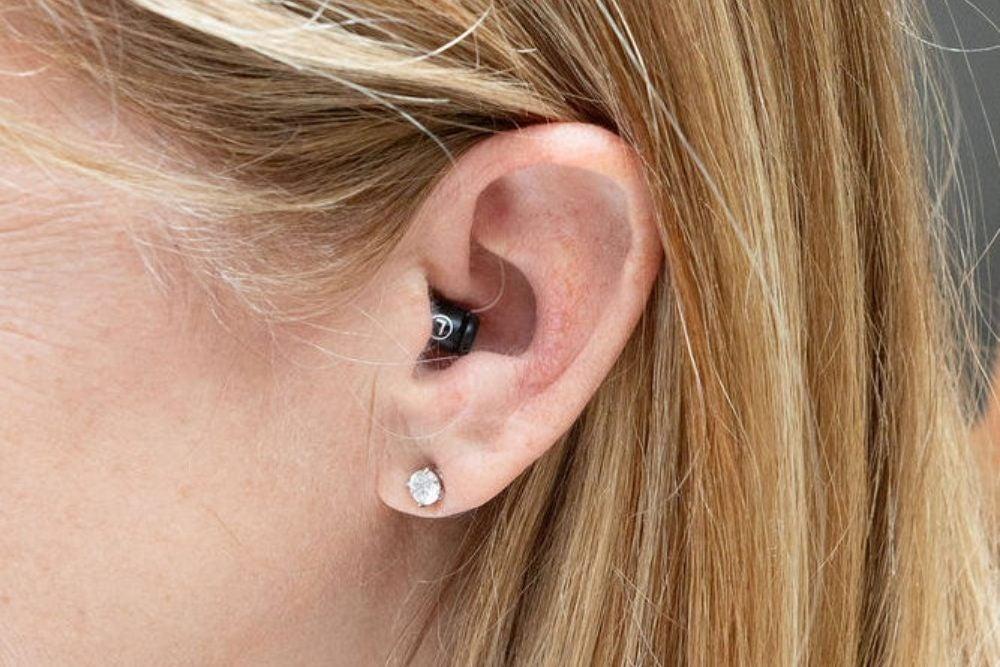
Our testers liked how snugly the Eargo 8 hearing aids fit in their ears. “They fit very securely. I moved around, jogged, and did jumping jacks, but they did not budge. I wore these for several hours and did not have any issues with them hurting my ears either,” said one of our testers.
We also noted how easily we could connect to and use the app with the Eargo 8s. “The app connected automatically with my hearing aids,” one tester said. “ I installed the app, and they immediately were available to start changing the settings and volume.”
And we can’t stress enough how much our testers loved the user manual, which made it easy to use the hearing aids right out of the box. “Toying with the fit, dome size, sound setting, and Bluetooth was pretty easy given the informative instructions.”
| LINK by Eargo | Eargo SE | Eargo 8 | |
| Cost | $799 | $1,549 | $2,699 |
| Type | Earbuds | CIC | CIC |
| Model notes | Discreet earbuds | Simpler device with long battery life | Most advanced (and priciest) model |
The Eargo customer experience
The Eargo 8 earned a 10 out of 10 from our testers for customer service. Here’s what you can expect:
- Warranty and trial period: 45-day risk-free trial period for all Eargo devices; one- to two-year manufacturer’s warranty depending on model
- Financing: Yes
- Customer service:
- By phone: 800-903-6883 (Monday–Friday, 8 a.m.– 8 p.m. CT; Saturday 8 a.m.–5 p.m. CT)
- Using chat: Representatives are available during the same times as above
Audicus: Best Support
We chose Audicus as having the best OTC hearing aid support for its lengthy trial period (the only brand on this list, besides Jabra, that offers 100 days); free lifetime audiology assistance; multiple ways to contact and get help from customer representatives; and an affordable add-on membership plan with unlimited warranty, device and parts replacement, and other valuable benefits.
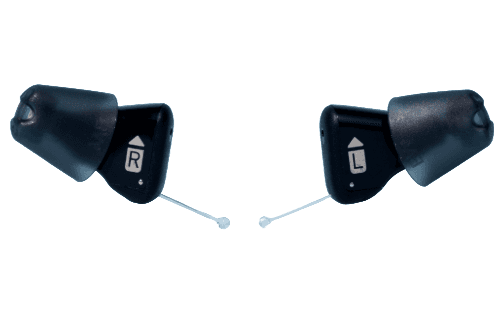
NCOA Special Savings
$200 off the Omni 2 hearing aids with code NCOA200
- Device type:
- Receiver-in-canal (RIC)
- Completely-in-Canal (CIC)
- Battery type: Rechargeable
- Trial period: 100 days
- Bluetooth: Yes
- Four different hearing aid models to choose from
- All RIC models offer Smart Sound Optimization and Bluetooth
- Hearing aids arrive custom-programmed to your hearing profile
- Free lifetime audiology support with all models
- Premier leasing option with free hearing aids every 18 months
Pros
- All but CIC model have Bluetooth streaming
- Hands-free calling for Apple and Android
- Free lifetime audiology support
- 100-day trial period
- Easy adjustments and setup
- Unique subscription service for $99/month (Audicus Premier)
Cons
- Higher price
- Sometimes, audio quality is tinny
- Audicus Premier only available for half of the models
What we like about Audicus:
The included initial setup call helps users get their devices up and running quickly and correctly. Most OTC hearing aids don’t provide personalized service like this. We are also impressed by the Audicus Mini 2’s low profile—they’re virtually invisible and stay secure even when exercising.
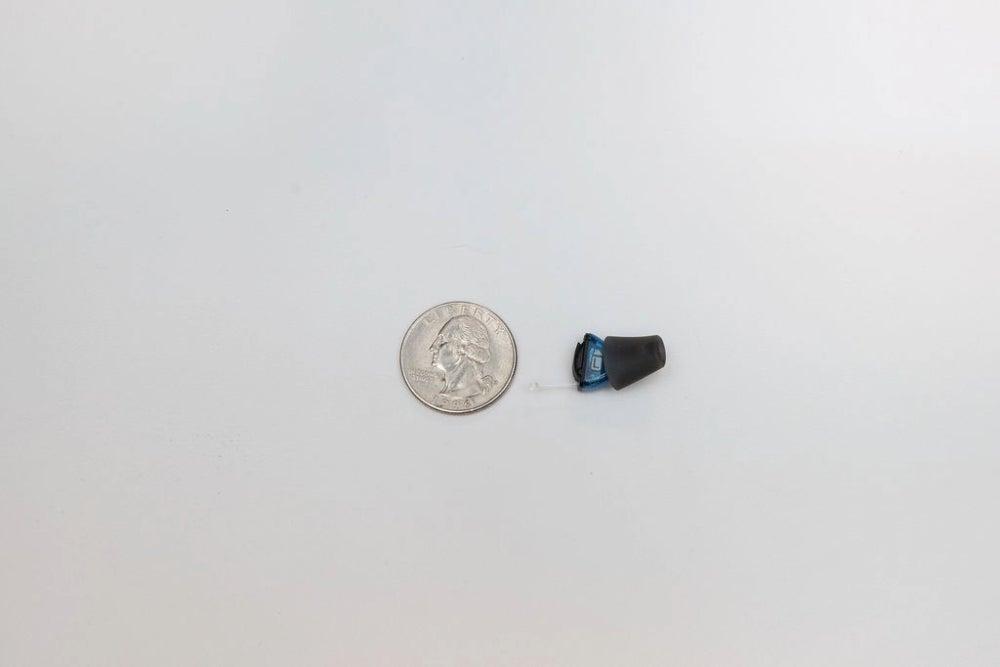
Other things we liked:
- Easy and versatile adjustments: Use the app, device buttons, or remote control to tweak volume, modes, and settings—or mail it back and have Audicus make the adjustments for you.
- Value-added perks: For $99 extra per month, customers get a subscription service (called Audicus Premier) that sends them new hearing aids every 18 months, accessories, insurance, and dedicated support.
What could be better:
For the relatively high price, we wish Audicus included higher-end features like the ability to customize user settings and preferences.
Other things we wish were better:
- Audio quality: Tends to sound tinny and sound differentiation isn’t great in loud settings
- Audicus Premier limits: Available only for Spirt 2 and Omni 2
Our testing experience
We tested out the Audicus CIC Mini 2. Our testers liked how simple the hearing aids were to charge, switch modes, and clean. On the other hand, some testers found the set-up confusing and recommended taking advantage of the initial set-up call, which would help smooth out the process. They wish the user manual had more pictures, though they appreciated the large print.

The fit of the hearing aids was described by testers as “very comfortable and lightweight” multiple times throughout testing. In fact, one of the biggest testing “pros” was how great the fit was for this model, even while moving. “They feel very secure while exercising and I love how lightweight they feel in my ears,” said one tester.
Maintenance was smooth, with testers noting it took just five seconds to change out a wax guard once they learned how to use the accompanying tool from the user manual.
| Audicus Wave 2 | Audicus Spirit 2 | Audicus Omni 2 | Audicus Mini 2 | |
| Cost | $1,398 | $1,648 | $1,898 | $2,498 |
| Type | RIC | RIC | RIC | CIC |
| Model notes | Lowest price | Better speech-in-noise performance | Most advanced sound processing | Invisible CIC device with no Bluetooth |
The Audicus customer experience
Testers gave Audicus a 9.5 out of 10 for customer service. Here’s what you can expect:
- Warranty and trial period: 100-day risk-free trial, two-year warranty, and free lifetime support with next-day appointments
- Financing: Yes
- Customer service:
- By phone: 855-971-0451 (Monday–Friday, 9 a.m.– 6 p.m. Eastern)
- By email: help@audicus.com
Elehear: Best for Tinnitus
We chose Elehear as our best OTC hearing aid for tinnitus because it includes tinnitus masking features—usually only available in expensive prescription hearing aids—at an affordable price. The ability to customize tinnitus masking programs, like layering the sounds of birds with the sounds of rainfall, is a definite plus our testers loved.
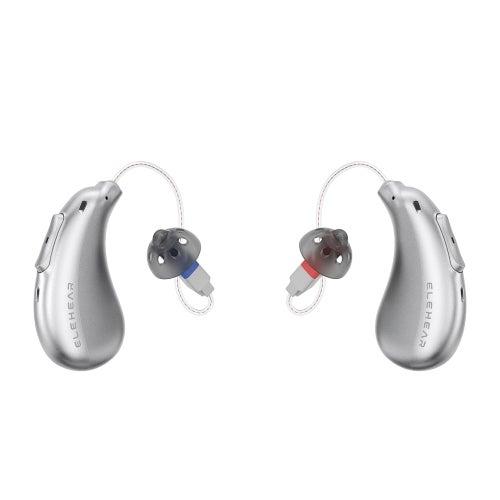
- Device type: Receiver-in-Ear (RIE)
- Battery type: Rechargeable
- Trial period: 45 days
- Bluetooth: Yes
- Devices include Bluetooth streaming for music, videos, and phone calls
- Includes AI-powered VOCCLEAR® technology for speech clarity
- Well-designed app to fine-tune settings
- Remote audiologist support
- Advanced wind-noise management
Pros
- Exceptional tinnitus masking
- Fast recharging
- Noise-cancelling technology
- Budget-friendly price
- Easy-to-follow user manuals
Cons
- Bulky appearance
- Pairing hearing aids could be easier
What we like about Elehear:
Elehear’s price is hard to beat (the second-lowest starting price on this list, after Audien)—especially given its Bluetooth capabilities, noise-canceling technology, and advanced tinnitus-masking features.
Other things we liked:
- Speedy charging: Takes just 90 minutes for a full charge; after that, 15 minutes gets you six hours of run time. OTC brands usually need up to three hours for a full charge.
- Included soundscapes: Used alone or layered, these ambient noises help tamp down tinnitus.
What could be better:
Pairing the hearing aids to the app is a two-step process requiring email verification. This could be hard for some users.
Other things we wish were better:
- Appearance: The hearing aids are bulky, making them more noticeable than other brands (like Eargo).
Our testing experience
For this article, we tested the Elehear Beyond and the newer, upgraded model, the Beyond Pro. Our testers rated these hearing aids “great” or “excellent” on all 13 measures of the user experience.
To start, both the Beyond and the Beyond Pro come in two colors: silver or champagne, and with a range of domes—13 sets in different sizes and shapes, compared to the industry average of four sets. Having more domes to switch out can make it easier for you to customize the fit.
Testers also liked the easy-to-follow user’s manual and intuitive app. According to them, the Elehear OTC hearing aids were exceptionally comfortable and easy to use directly out of the box. “Honestly, one of the best user manuals,” one reviewer said. “Lots of great pictures and step-by-step instructions.” Users can adjust both volume and frequency, as well as switch between four preset modes and a customized mode, through the ELEHEAR app.
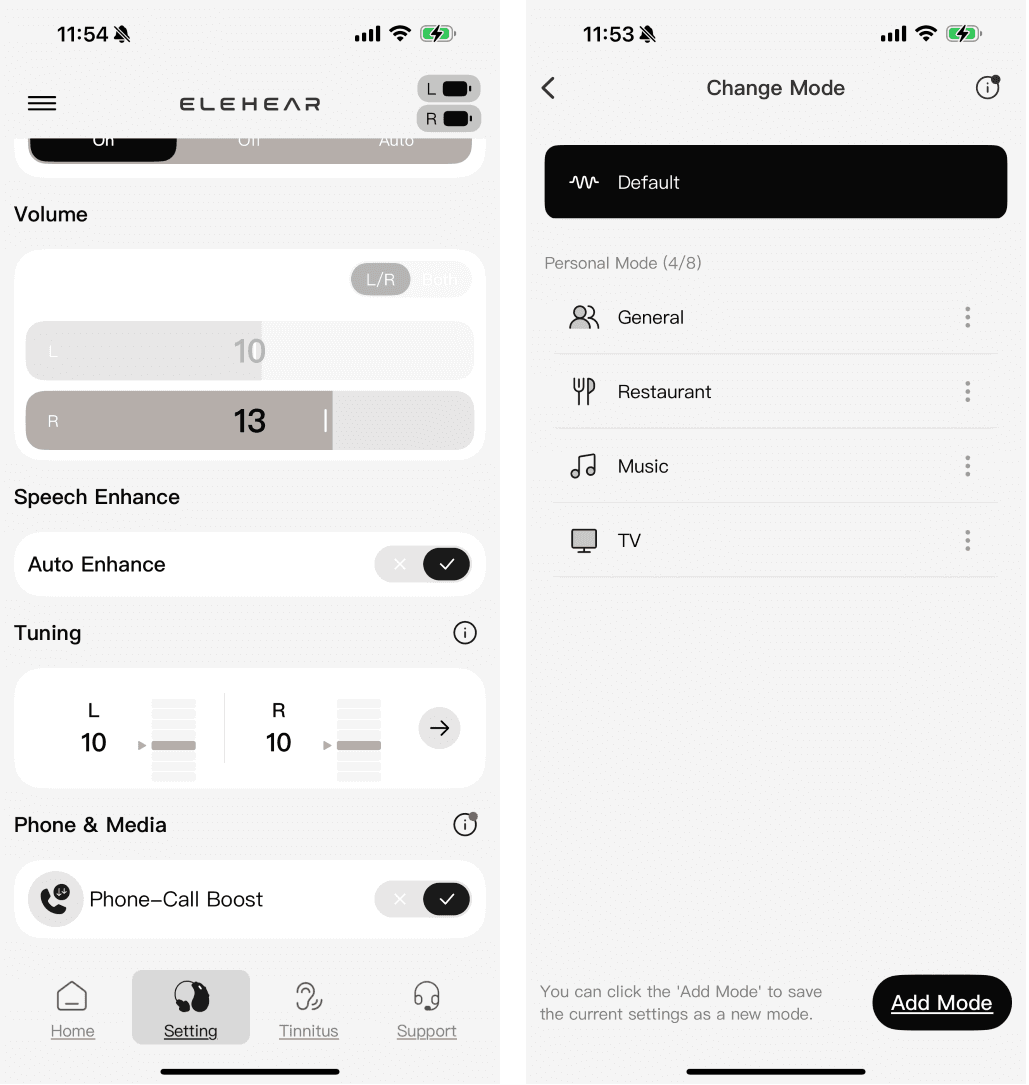
The hearing aids were easy to put in and stayed there, too—whether bending over to tie a shoe or doing jumping jacks. “I felt good in them,” another tester told us. And the Bluetooth sound quality stood out. “I was impressed with how far I could step away from the phone and still hear well,” one of our testers explained. “Really good audio quality that remained strong across the 80-foot range I walked,” they said. This comes close (but doesn’t beat) Jabra’s 100 feet range of clear audio while streaming Bluetooth music.
Plus, the Elehear Beyond and Beyond Pro deliver when it comes to addressing tinnitus. “The tinnitus settings are so impressive,” said one of our testers. “You can choose one background noise, or you can layer them, so if you want to layer the sounds of rain, a cat purring, and wind—you can do that.”
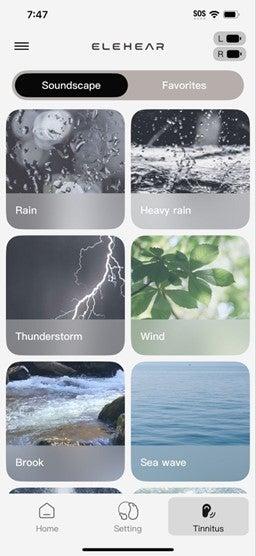

Tinnitus—a condition that causes you to hear persistent ringing or other noises in your ears—is usually subjective, meaning only the person experiencing it can hear it.1 That also means tinnitus can sound different from person to person.
Tinnitus is usually treated with sound therapy, which “distracts” your brain from the ringing sounds by playing soothing sounds like waves. Tinnitus therapy isn’t one-size-fits-all, so the ability to customize your sound therapy by layering different sounds is a huge perk—especially in an OTC hearing aid.2
| Beyond | Beyond Pro | |
| Cost | $399–$449 | $649 |
| Type | RIE | RIE |
| Model notes | Affordable tinnitus management; dry box for $50 extra | Enhanced AI noise reduction and 30% better speech clarity than the Beyond |
The Elehear customer experience
Testers gave Elehear an 8.3 out of 10 for customer service. Here’s what you can expect:
- Warranty and trial period: 45-day trial and a one-year warranty
- Financing: Available through Klarma
- Customer service:
- By phone: 888-669-1099 (Monday–Friday, 9 a.m.– 6 p.m. ET)
- By email: support@elehear.com
Lexie: Best Value
We chose Lexie as our best value OTC hearing aid because of its high-end features, fully customizable settings through its intuitive app, Bluetooth functionality, and robust product and customer support.
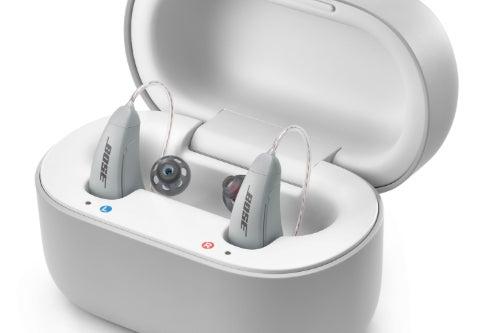
- Learn more in our Lexie review
- Device type: Behind-the-Ear (BTE) and Receiver-in-Ear (RIE)
- Battery type: Rechargeable
- Trial period: 45 days
- Bluetooth: Yes
- In-app hearing test to match the devices to your hearing profile
- B1 and B2 Plus models include Bose technology
- Most customizable with four preset modes and 10 personalized settings
- Award-winning customer support
- One-year warranty
Pros
- Easy setup
- Simple, streamlined user manual
- Comfortable fit out of the box
- Low price
- All models have Bluetooth
Cons
- Only most expensive model (B2 Plus) has rechargeable batteries
- Bluetooth streaming only in B2 Plus
- Adjustment and setup relies on app
What we like about Lexie:
Compared to more expensive devices, Lexie delivers a strong offering for the money: Bluetooth compatibility—including music and call streaming—with great sound and range and a wireless charging case that extends your day-to-day battery usage.
The Lexie app has additional features, including how-to videos and the ability to contact product support specialists directly when you need help. You can even shop for replacement cleaning kits, wax guards, and domes within the app.
Speaking of support, we love that Lexie includes a free user orientation call, lifetime professional audiology services, and a full one-year warranty when you buy. This is unique for an OTC hearing aid. The only OTC brand we’ve seen offering better post-purchase support from hearing experts is Jabra Enhance.
Pricing is transparent, and while Lexie doesn’t offer payment plans, they partner with Klarna to provide financing options.
Other things we liked:
- Customization: Create up to 10 personalized settings in addition to four presets
- Device style: Sit discreetly behind the ear and are largely invisible
What could be better:
Unless you’re actively watching the app, it’s hard to know which of the different programs and modes you’re in when toggling among them. The hearing aids themselves don’t make a beep to tell you a mode has changed, which can be slightly frustrating.
Other things we wish were better:
- More on-device control: You need to use the app—and have your smartphone nearby—to change every setting except the volume.
- Lackluster Bluetooth: Bluetooth sound quality relies heavily on how close you are to your phone—testers said it only sounds optimal if you’re right next to your phone.
- More styles: It would be nice to have in-the-ear (ITE) and completely-in-canal (CIC) options.
Our testing experience
Our testers tried out the Lexie B2 Plus. They liked the discreet design, and the devices were comfortable out of the box, but the setup instructions could have been more clear. Our tester didn’t realize they had to turn on each device individually instead of as a pair, so this created some confusion before they realized what they’d done wrong. The text on the user manual was also very small and could be difficult to read for some. Luckily, the app was very easy to use and clear to understand.
Though there wasn’t a sports lock, one tester wore the hearing aids while doing jumping jacks and yoga and found them to be surprisingly secure. The devices were also relatively sturdy—unlike some brands, where it feels like you need to have a very delicate touch, our tester could toss this pair around and wasn’t worried about damaging them.
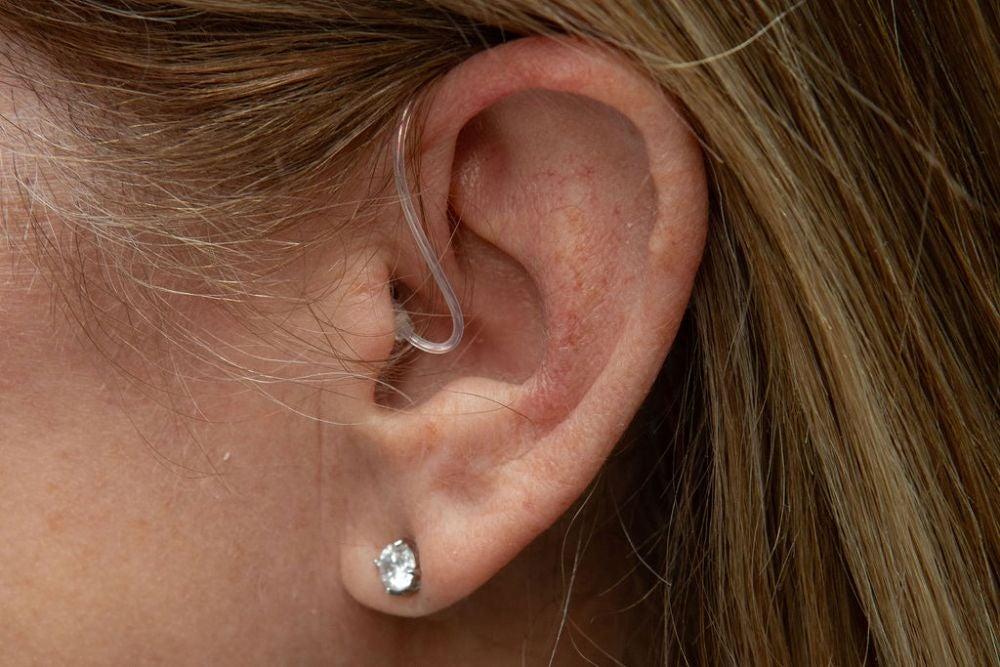
One unique feature testers liked was the individual ear muting—you can mute one ear to hear better out of the other. This could be useful in a crowded, loud room when trying to hear the person directly to one side of you.
| Lexie Lumen | Lexie B1 | Lexie B2 Plus | |
| Cost | $299 | $749 | $999 |
| Type | BTE | RIC | RIC |
| Model notes | Lowest price | Disposable batteries | Rechargeable batteries |
The Lexie customer experience
Testers gave Lexie a 9.3 out of 10 for customer service. Here’s what you can expect:
- Warranty and trial period: 45-day risk-free trial and a one-year warranty
- Financing: Available through Klarna
- Customer service:
- By phone: 800-499-1336 (Monday–Saturday, 9 a.m.– 8 p.m. ET)
- By email: support@lexiehearing.com
- Via text: 779-212-7090
OTC hearing aids 101
Chances are high you’ll experience some degree of hearing loss in your lifetime. Most of us do. In fact, hearing loss is one of the most common conditions affecting adults 65 and over in the United States.3 Yet Original Medicare (Parts A and B) doesn’t cover the costs of hearing aids.
Due to a new FDA rule that took effect in October 2022, millions of Americans with mild to moderate hearing loss can now purchase hearing aids over the counter (OTC). This is great news for people who need more affordable, accessible choices. What once might have cost thousands of dollars in office visits, fittings, and equipment may run a small fraction of that today. Now, anyone age 18 or over can buy OTC hearing aids without having to visit a hearing care professional first.
Advice from our long-term testers
Don't be afraid to reach out to your hearing aid's support line if they're not working for you.
“I couldn’t get one [hearing aid] to work. She walked me through it and what I was doing. I was charging them up all the time, constantly charging them. She goes, ‘That's a no-no.’ You know,
you charge them a little bit and then once I stopped doing that and we rebooted them, they've been working okay.”
By calling customer support, our tester, Neil, 70, was able to troubleshoot his hearing aid issues, and found a quick and easy solution.
Risks of untreated hearing loss
Why is this important? Research suggests that those of us with untreated hearing loss have a greater risk for dementia, depression, heart attacks, and falls.4, 5, 6
“Untreated hearing loss significantly increases the risk of cognitive decline, including dementia. Studies show that mild [untreated] hearing loss doubles the risk of dementia, moderate hearing loss triples it, and severe hearing loss makes it five times more likely,” said Rachel Artsma, AuD, a senior audiologist at Hear.com in Scranton, Pennsylvania. “This is due to cognitive overload,” she said. “When the brain struggles to fill in missing sounds, it takes energy away from other functions. Social isolation also plays a major role, as people with hearing loss often withdraw from conversations, further increasing the risk of dementia.”
Hunter Gerhart, AuD, director of audiology at Livingston Hearing Aid Center in Dallas, agrees that social isolation is a major factor with untreated hearing loss. “Many of my patients avoid social functions because it’s difficult for them to participate. As a result, they risk social isolation, which can have a major impact on their mental health,” Gerhart said. “On average, it takes seven years from the time someone first notices hearing difficulties to do something about it. That can mean seven years of missing out on significant social events like birthday parties or holidays.”

Should I Get a Hearing Test?
Anyone with mild to moderate hearing loss can buy OTC hearing aids without a professional evaluation. Still, we recommend taking an in-person hearing test. This can rule out possible causes for your hearing loss that hearing aids won’t fix.
In-person vs. online hearing tests
If you’ve never had a hearing test, experts recommend having one in person first. “In-person hearing tests are more comprehensive [than online tests] and include testing multiple frequencies (pitches), speech testing, bone conduction testing (which specifies the type of hearing loss), and testing middle-ear function,” said Taylor Ferrell, AuD, an audiologist at the Ohio State University Wexner Medical Center in Columbus, Ohio.
Audiologists and ENT (ear, nose, and throat) specialists offer the most thorough checkup possible. In addition to testing your hearing range, they will look for other problems—such as impacted ear wax, structural issues, and underlying medical conditions—that may explain your hearing loss.
Online or app-based hearing tests are good options if you’ve already consulted a hearing care professional. “Online hearing tests are typically not as comprehensive as in-person hearing tests, and are more basic like a hearing screening,” said Farrell. Online hearing tests won’t diagnose the reasons for your hearing loss. But they do help identify: your level of loss (mild, moderate, or severe); your pitch range (low to high); and any differences in hearing ability from one ear to the other.
What you should know before buying an OTC hearing aid
Before you start shopping, ask yourself four simple questions:
1. Do I know what type of hearing loss I have?
You might guess your hearing loss is age-related. And you very well may be right. Only 3% of respondents to our NCOA hearing aid survey were younger than 50 when they first started wearing hearing aids. In contrast, more than 40% were between 60–70 years old, and more than 42% were between 71–80 years old.
Also known as presbycusis, age-related hearing decline falls into the “sensorineural” category—the most common type of hearing loss.7 Sensorineural hearing loss happens because of damage to your inner ear or the nerves that carry auditory (hearing) signals to your brain. In addition to aging, exposure to loud noise (like blaring music, gas-powered lawn equipment, jet engines, and sirens) can cause sensorineural hearing loss. So can some medications, illnesses, and inherited conditions.
On the other hand, your hearing loss might be “conductive”—meaning sounds don’t make it to your inner ear very well or at all.8 Impacted earwax, ear infections, noncancerous tumors, and anatomical issues all can cause conductive hearing loss. It’s also possible you have “mixed” hearing loss: partially conductive, partially sensorineural.
An audiologist or other hearing professional can help pinpoint what’s causing yours so you can choose the best OTC hearing aid to address it. And if hearing aids aren’t effective for the type of hearing loss you have, your health care provider can go over treatment options with you.
2. Do I know my level of hearing loss?
Over-the-counter hearing aids are meant for people with mild to moderate hearing loss. If you generally pick up on most sounds—but sometimes have a hard time following soft-spoken people or conversations—you likely have mild hearing loss. If you regularly strain to hear people who are speaking at a normal volume—especially in crowded or noisy places—you may have moderate hearing loss.
Of course, judging your own hearing is subjective. You may have lost less or more than you think you have. That’s why it’s always a good idea to get your hearing checked by a professional before you spend any money. Buying OTC hearing aids won’t help if your hearing loss is severe, no matter the type. If your hearing loss is more complex, ask your audiologist about the best prescription hearing aids for your hearing profile. And some models are better than others when it comes to things like your unique ear structure or whether you have tinnitus (ringing).
3. What lifestyle factors should I consider?
Once you know the type and degree of your hearing loss, it’s time to think about when and how you want to wear hearing aids. Perhaps you regularly take a group fitness class and would like to hear better while exercising. Maybe you spend a lot of time on the phone and want your hearing aids to connect to it—and have a solid battery life, too. And you might have ideas about how hearing aids look. Some people don’t mind if they’re noticeable. Others prefer them not to show.
In my experience
“It's not that people see it, it's that I feel it and move my hair, comb my hair and different things like that. It's less about the look and more just the convenience of it.”
—Carol, 68, one of our long-term testers, describing her experience getting used to BTE hearing aids
4. What trial period do I need?
Because you can buy OTC hearing aids without an expert appointment, you’ll have limited post-purchase support compared to a prescription hearing aid. That’s why a long trial period is important. Every brand on this list has at least a 45-day trial period, but we prefer 100 days, since it usually takes at least one month to adjust to new hearing aids.
How to buy an OTC hearing aid
More than 65% of our hearing aid survey participants bought their devices at an audiologist’s office or hearing health clinic. This isn’t surprising; In the past, it was the only way to get them. The FDA’s ruling blew those doors wide open, and your buying options are nearly endless now. From big-box stores to Veterans Affairs centers, you can walk into hundreds of retailers or visit them online. In many cases, you can buy directly from the manufacturer’s website, too.
Other popular options include:
- Warehouse clubs like Costco and Sam’s Club
- Superstores like Walmart and Best Buy
- Pharmacies like Walgreens and CVS
- Cellular providers like Verizon and T-Mobile
- Amazon
- Community-based clinics
Online or in-store
How and where you choose to purchase is largely a matter of convenience and comfort. If you prefer to see and touch hearing aids before you buy—and want the opportunity to ask questions of a real person—it makes sense to visit a brick-and-mortar store. On the other hand, if you don’t live near many stores or you don’t have a car or other good way to get to them, shopping online can work well. Nearly 13% of our survey respondents bought their hearing aids this way.
In my experience
"I just set mine up when they came, and then we called, and they were all set up. It was easy…it's got good directions and I just followed it through, loaded the app, and they started working.”
—Neil, 70, one of our long-term testers, describes setting up his hearing aids after receiving them in the mail
Some in-store locations have audiologists or trained hearing health providers on staff. These professionals may administer hearing tests and help fit your OTC hearing aids. Keep in mind hours and services may vary by location, and the hearing tests may not be comprehensive. Always check ahead of time by calling the store you plan to visit.
And a note about customer support: Whether you’re buying online or in-store, you’ll want to find out about trial periods, store return policies, and manufacturers’ warranties. These can vary widely depending on the retailer and can make a big difference in your overall satisfaction.
Expert shopping tips for OTC hearing aids
First things first: Always look for clear FDA labeling before you buy.9 This is the best way to ensure you’re getting a solid product—not a cheap knock-off.

Consumer note
FDA regulations require that all OTC hearing aids include the following information on the box:
- The words “OTC” and “hearing aid” must clearly be displayed
- Hearing health information
- Product warnings
- Whether the device is used or rebuilt
- The type and number of batteries needed, and whether batteries are included
- If you need a mobile phone or remote-control to control the device
The FDA also says that OTC hearing aids can’t exceed a certain volume and must sit safely away from your eardrum. Their volume adjustments must be easy to use, and they must include instructions for how to wear and care for them.
Here are some other things to keep in mind as you shop:
Check for FDA registration. This is a bit tricky because of the wording. Keep in mind “registration” is not the same as “approved” or “authorized” or “cleared.”
Any retailer or other establishment that sells medical devices like OTC hearing aids generally must register with the FDA each year.10 This registration applies to the business itself—whether online or brick-and-mortar—not the hearing aids you buy there. The FDA doesn’t issue any certificates, signs, or badges that businesses can display to prove they have registered. Retailers displaying these may be trying to mislead you. The only way to check whether you’re buying from an FDA-registered establishment is to search the FDA Registration & Listing public database (every brand we recommend is registered with the FDA).
Because the OTC hearing aid rule is relatively new, the FDA is just getting started on approving the devices themselves. You can check Devices@FDA for approved brands and companies by typing “hearing aids” or “OTC hearing aids” into the search box. But it’s important to know you won’t see many just yet. As long as the FDA labeling is present on the packaging, you can proceed with confidence.
Learn about trial periods and return policies. It takes time to adjust to hearing aids—especially if you’re wearing them for the first time. As one of our testers observed, “I think people just expect to insert a hearing aid in their ear and they’ll be able to hear everything with no problems—not all ears are shaped uniformly. You have to almost re-learn how to hear. The brain needs to adapt to the sounds the hearing aids produce.”
And buying them over the counter means you’ll likely be tweaking the fit, sound level, and other features yourself. It’s important that you’re comfortable with the amount of time you’re allowed to test out different models.
Understand the capabilities of each device you’re considering. First, there are many different styles of hearing aids: behind-the-ear (BTE); receiver-in-canal (RIC); in-the-ear (ITE); in-the-canal (ITC); completely-in-canal (CIC); and invisible-in-canal (IIC). Consider your preferences and your hearing needs.
Features—including battery life and Bluetooth compatibility—are important, too. Some models use disposable batteries, while others are rechargeable. You may want to take this into account when thinking about the price of hearing aids. Having to replace batteries may increase their cost over time. But rechargeable batteries begin to decline after about two and a half years, so you may need to replace or repair your device by the five-year mark. All these factors depend on how much the hearing aid is used and in what ways. For example, streaming hours of music will drain a battery much more quickly.
Be wary of buying hearing aids on social media. This is a common phishing tactic. Sophisticated scammers create content that appears to originate with trusted brands and sites—Amazon being one—and use it to lure you in. When you click to purchase, these scammers are ready to steal your credit card info and other personal details. If you see a sale advertised on Facebook, Instagram, or another platform, check the manufacturer’s site separately. If the sale is real, you should find it there as well. We always recommend buying online from a site whose address you’ve typed into the browser window yourself.
Read more shopping tips in our hearing aid buyers guide.
How much do OTC hearing aids cost?
Among our survey respondents, 28% said price was their top concern when considering over-the-counter hearing aids (behind only “sound quality”).
You can expect to pay anywhere between $100–$2,000 or even more for OTC hearing aids. How much you spend really depends on the features you choose. The models we reviewed for this article range from $99–$2,699.
That may seem expensive at the high end. Keep in mind, prescription models can cost much more: Our research found some prices as high as $7,000. Why the difference? Because prescription hearing aids include “baked-in” costs covering things like office appointments before and after you buy, as well as regular professional cleanings, adjustments, and upgrades.
Does Medicare pay for hearing aids?
No, in most cases, Medicare doesn’t pay for hearing aids. Original Medicare (Parts A and B) doesn’t cover hearing exams, hearing aids, or fittings. The exception: Medicare may cover diagnostic hearing and balance tests if your doctor suspects an underlying condition. You can discuss this with your primary health care provider.
Some Medicare Advantage plans offer additional vision, hearing, and dental benefits. If you’re enrolled in Medicare Advantage, check with your plan to see what coverage you may have for hearing health. It is also important to check who the participating providers are in your plan (or before you enroll in a plan).
What about Medicaid? It depends on where you live. Some states opt to include a certain level of hearing care in their plans. If you’re a Medicaid enrollee, contact your state agency to ask whether this coverage is included. Most include coverage for pediatrics, but less than half provide some coverage for adults.
If you need hearing aids and can’t afford them, it’s worth checking around for programs that can help, like these:
- Some manufacturers may offer financing options, rebates, or other incentives.
- The nonprofit Hearing Aid Project of America publishes a searchable directory of state, national, and international resources.
- Some Lions Clubs have programs that provide free or low-cost hearing aids; contact your local chapter to learn more.
- If you’re a veteran whose hearing loss is service-related, you may qualify for free hearing aids through the U.S. Department of Veterans Affairs.
- The Indian Health Service may provide free or low-cost hearing aids for its tribal members.
- You can also check with your state’s Department of Rehabilitation Services to see if they can help you cover the cost.
- Check NCOA’s BenefitsCheckUp® to find benefits in your area.
Frequently asked questions
How do I know if I need hearing aids?
If you suspect you have hearing loss, consult a professional for an evaluation. An audiologist or ENT physician can pinpoint the exact cause(s) of your hearing loss and identify the best way(s) to treat it.
Are OTC hearing aids any good?
Yes, OTC hearing aids can be an affordable alternative to prescription hearing aids. Take your time to research different brands and models before you buy OTC hearing aids to make sure the pair you purchase is legitimate.
How long do OTC hearing aids last?
OTC hearing aids last anywhere from three to seven years, on average. How long a particular set of hearing aids will actually function depends on several things: how much they cost (it’s generally true that you get what you pay for); how well you maintain them, including regularly cleaning your hearing aids and replacing the wax guards; how often you charge or change the batteries; and where you store them. Humid environments, like a medicine cabinet or closet in your bathroom, can damage your hearing aids.
If you take good care of yours, there’s no reason they shouldn’t last. That said, it's always a good idea to find a manufacturer that stands behind its brands with solid product warranties and customer support.
Can you use HSA or FSA funds to purchase hearing aids?
Yes. Hearing aids are considered qualified medical expenses (QMEs) under the IRS code, which means they are eligible for reimbursement with HSA or FSA funds. You may also be able to use an FSA or an HSA to pay for eligible expenses related to hearing aids, such as batteries, ear molds, and repairs.

